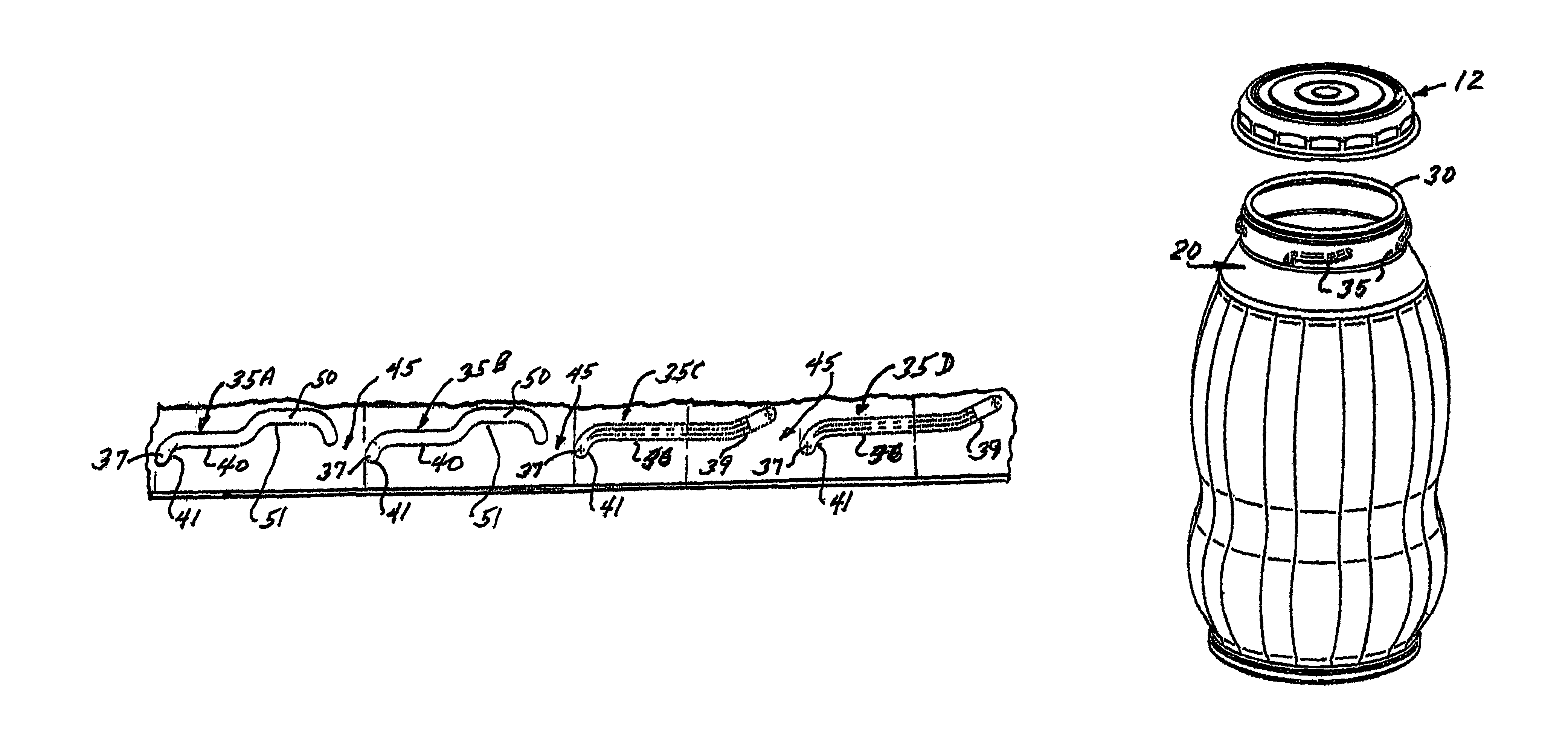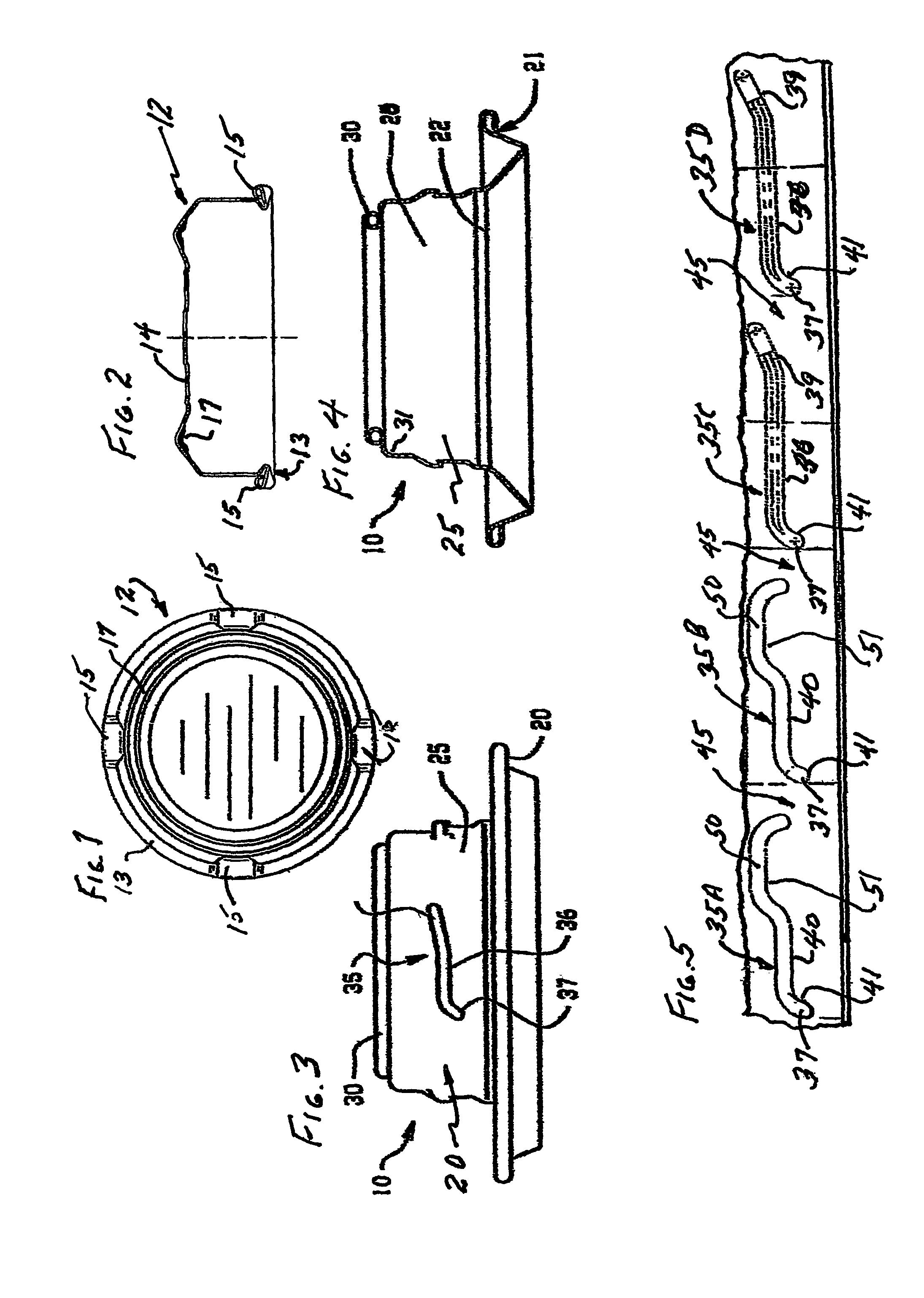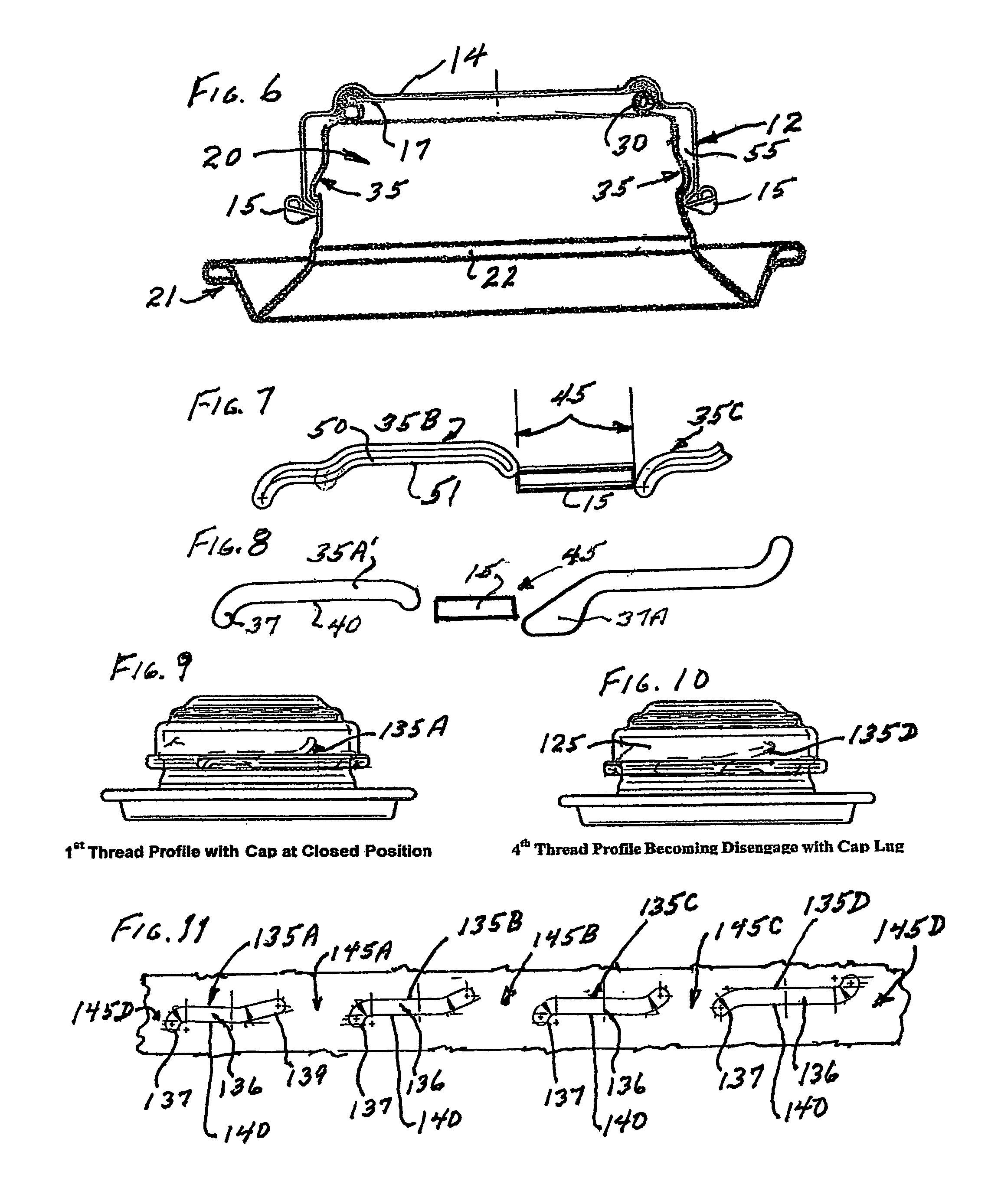Container and removable closure cap with venting feature
a technology of closure cap and container, which is applied in the field of containers, can solve the problem of not being able to remove the cap from the container, and achieve the effect of reducing the sealing pressur
- Summary
- Abstract
- Description
- Claims
- Application Information
AI Technical Summary
Benefits of technology
Problems solved by technology
Method used
Image
Examples
Embodiment Construction
Pressure Venting
[0038]The principal feature of the invention is a reclosable cap and cooperating neck lugs on the neck of the container, which feature can be applied to various containers, for example cans or bottles, made from different materials.
[0039]Dimensions, where shown, are for the purpose of explanation and are not limitations on the scope of the invention. The container end of the present invention, as executed in metal (preferably aluminum), is comprised of two major parts, a neck structure 10 (FIGS. 3 and 4), and a cap member 12 (FIGS. 1 and 2). The cap is in the general form of an inverted cup, including an outwardly curled lower rim 13 depending from the top panel 14 of cap member 12. Four cap lugs 15 are formed 90° apart on rim 13, and the interior surface beneath the top of the cap includes a seal member 17. As will be noted in FIG. 1 the cap lugs 15 are tapered to a smaller inner end as they extend generally radially inward from rim 13.
[0040]Referring to FIGS. 3 and...
PUM
 Login to View More
Login to View More Abstract
Description
Claims
Application Information
 Login to View More
Login to View More - R&D
- Intellectual Property
- Life Sciences
- Materials
- Tech Scout
- Unparalleled Data Quality
- Higher Quality Content
- 60% Fewer Hallucinations
Browse by: Latest US Patents, China's latest patents, Technical Efficacy Thesaurus, Application Domain, Technology Topic, Popular Technical Reports.
© 2025 PatSnap. All rights reserved.Legal|Privacy policy|Modern Slavery Act Transparency Statement|Sitemap|About US| Contact US: help@patsnap.com



